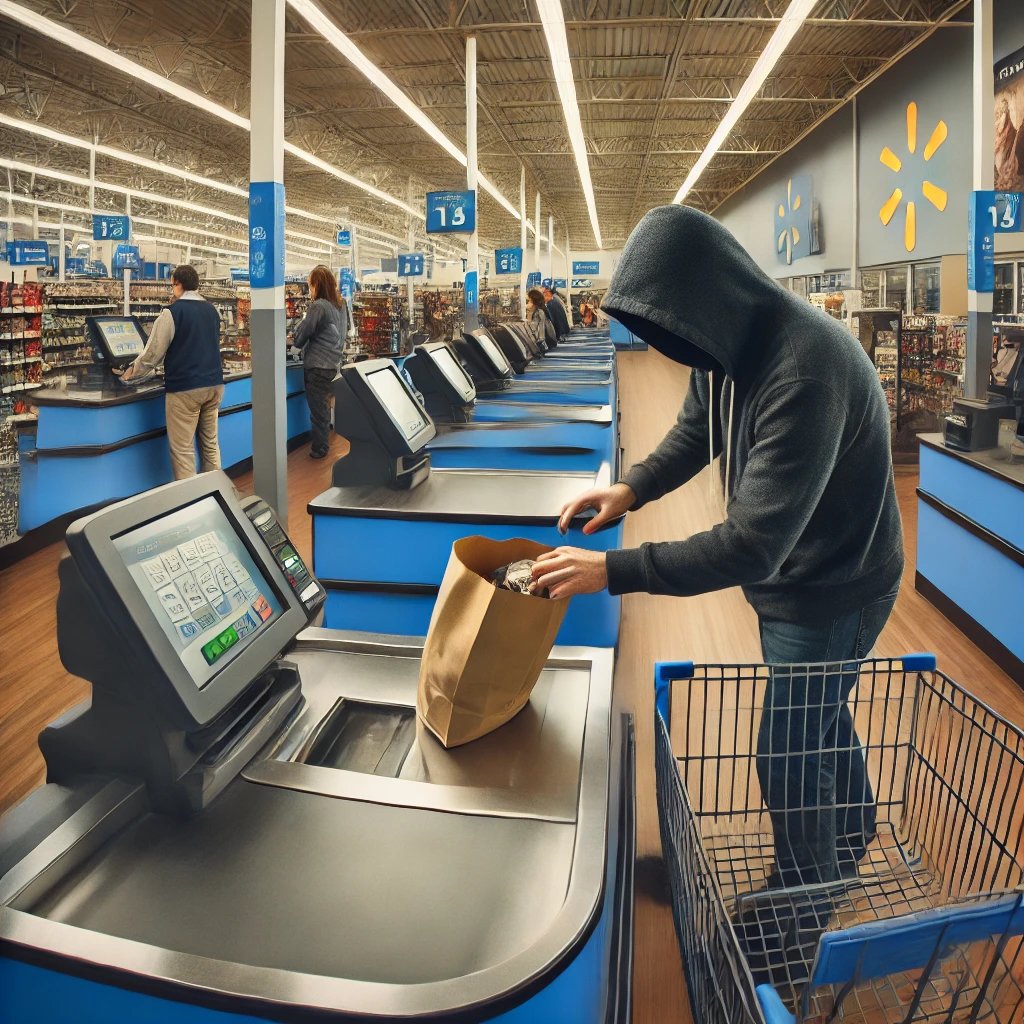Self-checkout lanes were introduced as a modern convenience, designed to speed up shopping trips and reduce labor costs for retailers. However, as more and more consumers embrace this technology, a darker side has emerged—an alarming increase in shoplifting. This issue has become so pronounced that major retailers like Walmart are now pulling back on their use of self-checkout lanes, a move that highlights the unintended consequences of this seemingly simple innovation.
The Rising Tide of Shoplifting in Self-Checkout Lanes
The idea behind self-checkout is straightforward: allow customers to scan, bag, and pay for their items with minimal human interaction. But as the LendingTree survey highlights, this lack of oversight has led to a significant uptick in theft. Approximately 15% of shoppers admitted to having shoplifted at a self-checkout station, a statistic that underscores just how easy it can be to slip an item past the scanner.
Walmart, one of the largest retailers in the world, has been forced to confront this issue head-on. According to a recent report, the retail giant is removing self-checkout lanes from several store locations, including those in Shrewsbury, Missouri, Cleveland, Ohio, and Albuquerque, New Mexico. This decision follows a trend seen in other retailers like Dollar General, which has also pulled self-checkout lanes from 300 of its stores due to rising theft rates.
Why Self-Checkout Leads to More Theft
The reasons behind the increased shoplifting at self-checkout lanes are both deliberate and accidental. On one hand, the absence of a cashier creates an opportunity for theft that some shoppers find too tempting to resist. On the other hand, self-checkout systems are prone to user errors, leading to accidental shoplifting where items are either not scanned properly or missed altogether.
Niel Saunders, managing director of GlobalData, explained that “theft rates at self-checkouts are reasonably high both because of deliberate actions and accidental mistakes.” By forcing more customers to use manned checkouts, retailers can significantly reduce these issues and, ultimately, save money.
The Challenge of Using Security Tags with Self-Checkout
One of the often-overlooked aspects of self-checkout that contributes to increased theft is the difficulty in effectively using security tags. In traditional checkout lanes, cashiers are responsible for removing or deactivating security tags on items before they leave the store. However, in a self-checkout environment, this process becomes more challenging.
Security tags require either a specific tool to remove them or a deactivation step at the register. With self-checkout, there’s a higher likelihood that shoppers might skip these steps, either accidentally or intentionally. Some may forget to deactivate the tags, while others might take advantage of the lack of oversight to simply walk out with tagged items. This creates an additional layer of complexity for retailers trying to prevent theft in an already vulnerable setup.
Moreover, the presence of security tags can cause false alarms if they are not properly deactivated, which can lead to awkward and time-consuming situations at the exit. These incidents not only inconvenience honest customers but can also overwhelm store staff, making it easier for shoplifters to slip through the cracks.
The Broader Impact on Retail and Society
The financial impact of shoplifting is enormous. The National Retail Federation reported that retail theft, which includes shoplifting and employee theft, drove $112 billion in losses in 2022 alone. This figure represents a substantial increase from previous years and highlights the growing problem that retailers face.
As a result of these losses, many retailers are rethinking their strategies around self-checkout. Walmart’s decision to remove these lanes is a clear indication that the convenience of self-checkout may not be worth the cost. This move also suggests that the future of retail might see a return to more traditional, cashier-manned checkout lanes, at least in part.
The Ethical Dilemma of Self-Checkout
The rise in self-checkout theft also brings up ethical questions about the role of technology in retail. Is it fair to place consumers in a situation where the temptation to steal is higher, especially in times of economic hardship? And what responsibility do retailers have in preventing theft without compromising the customer experience?
These are complex questions with no easy answers. However, one thing is clear: as long as self-checkout remains a part of the retail landscape, the issue of shoplifting will continue to be a significant challenge.
The Future of Self-Checkout
The story of self-checkout is a cautionary tale about the unintended consequences of technology. What began as a way to streamline the shopping experience has, in many cases, led to increased theft and significant financial losses for retailers. Walmart’s decision to pull self-checkout lanes from several stores is a telling sign that the retail industry is re-evaluating the true cost of this technology.
As retailers navigate these challenges, the future of self-checkout remains uncertain. Will we see a continued rollback of this technology, or will new solutions emerge to address the problems it has created? Only time will tell, but one thing is certain: the convenience of self-checkout comes with a price, and both consumers and retailers are paying it.


